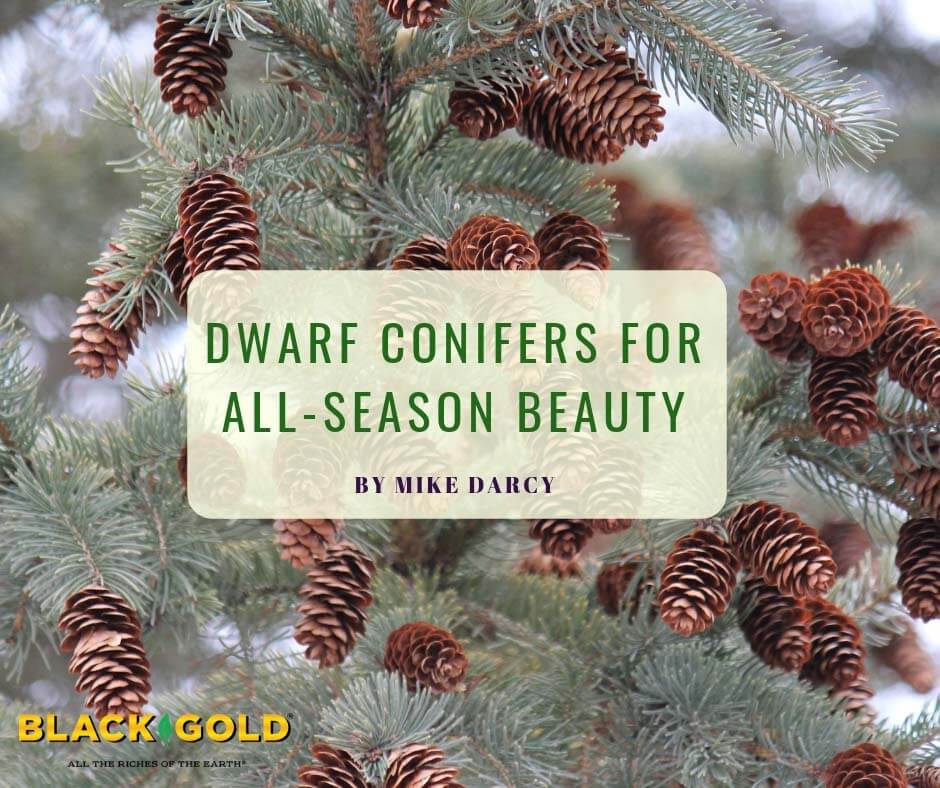
Dwarf conifers are often overlooked as both landscape or container plants. In recent years there have been many new cultivars of dwarf conifers that have been developed to be super compact and slow growing. These make superb garden specimens that will shine all year long, especially in the winter months.
Dwarf Conifers Defined
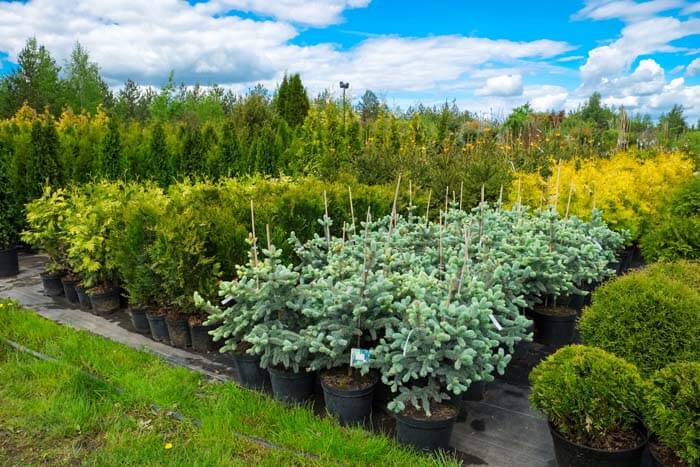
There has been some confusion, for both the retailer and the consumer, regarding the true definition of a dwarf conifer. To help eliminate this confusion, and to establish some parameters for growth that a homeowner would understand, the American Conifer Society has established two size categories, dwarf and intermediate. Dwarf conifers grow very slowly to a final height of 1-2 feet in ten years. Intermediate conifers, while not technically a dwarf, are compact and can easily be worked into landscapes or containers without becoming large trees. An intermediate conifer will grow up to 12 inches annually and can be selectively pruned to maintain a smaller shape.
Dwarf Conifer Care
 In my own garden, I have many containers with dwarf conifers, and they have become an important part of my patio display. They provide an evergreen appearance throughout the year and tolerate our summer and winter conditions. Most grow best in full to partial sun, however, read plant tag information regarding sun/shade requirements whenever you purchase a new conifer, so it Black Gold Natural & Organic Potting Mix. I have found that it provides the fertility and good drainage that most conifers need.
In my own garden, I have many containers with dwarf conifers, and they have become an important part of my patio display. They provide an evergreen appearance throughout the year and tolerate our summer and winter conditions. Most grow best in full to partial sun, however, read plant tag information regarding sun/shade requirements whenever you purchase a new conifer, so it Black Gold Natural & Organic Potting Mix. I have found that it provides the fertility and good drainage that most conifers need.
Favorite Dwarf Conifers
It is always difficult to make a list of favorite plants, but I have carefully chosen select dwarf conifers for my garden. Here are some of my garden favorites along with a few other garden-worthy selections.
Korean Fir
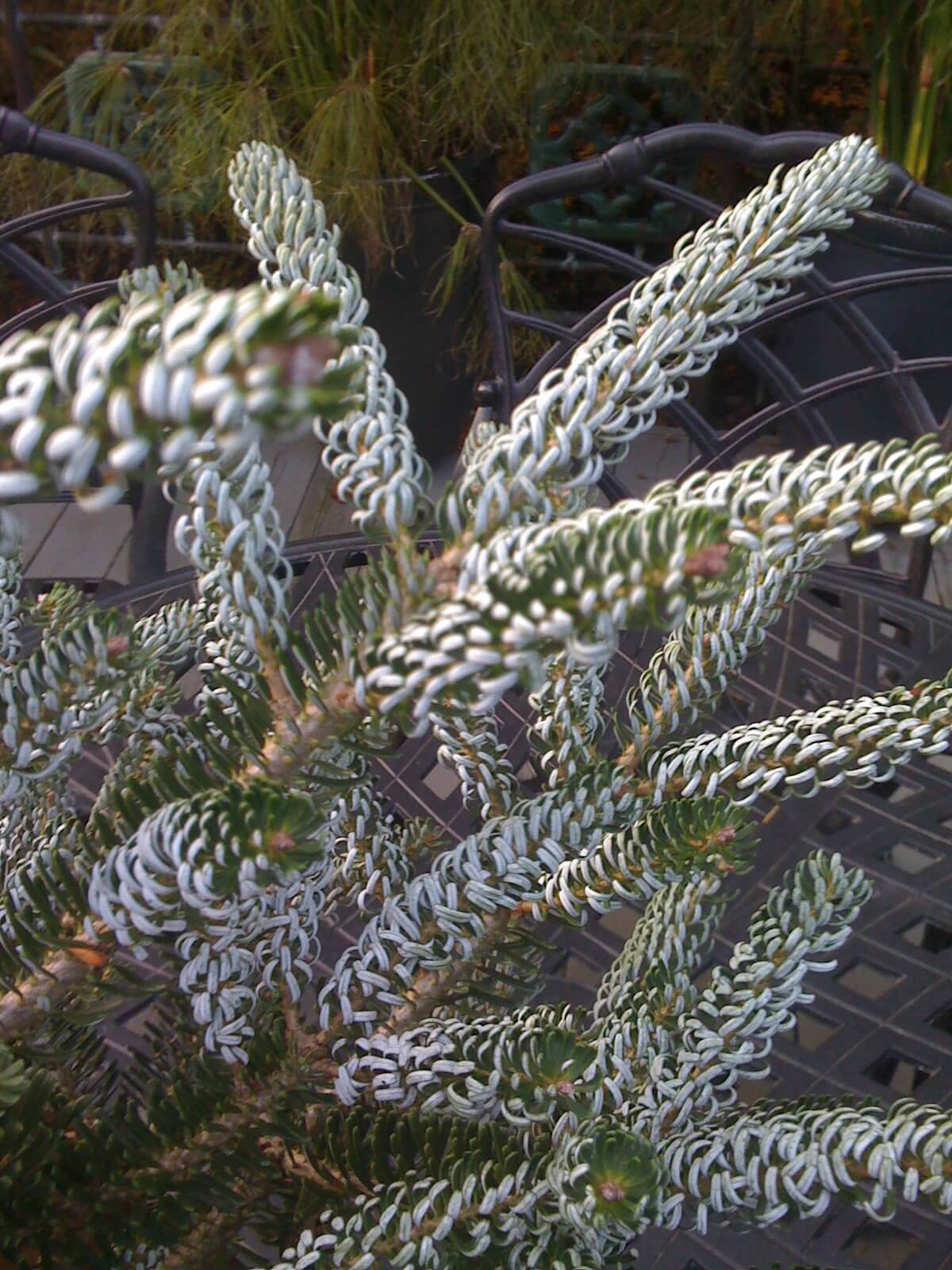
Two of my favorites are Korean firs (Abies koreana). The first is the conical golden Korean fir (Abies koreana ‘Aurea’), which has needles that are lemon yellow and quite attractive when in a bed with a background of green foliage. This intermediate conifer grows very slowy but can reach a final height of 8 feet or more. The second is the silver dwarf Korean fir (Abies koreana ‘Horstmann’s Silberlocke’), which has needles that slightly curl around the stem to reveal blue-green needles with silver-white undersides. It is also an intermediate conifer but is easily kept small by pruning. I have to admit that the ‘Horstmann’s Silberlocke’ is my favorite. It gets many comments from garden visitors.
Japanese Plum Yew
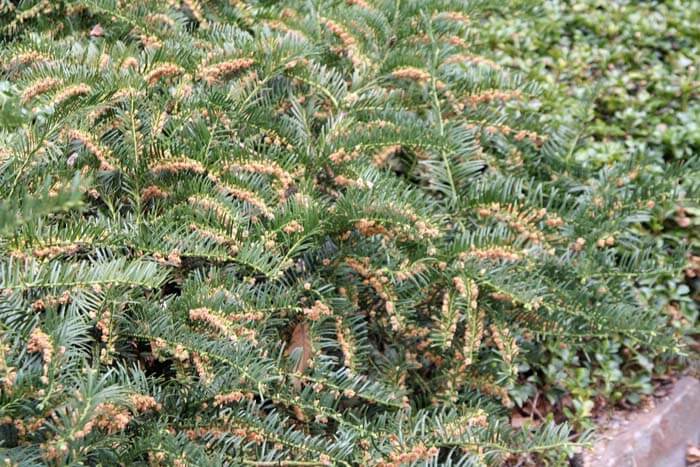
A conifer with beautiful upturned needles and a low, spreading habit is spreading Japanese plum yew (Cephalotaxus harringtonia ‘Prostrata’). It creates perfect evergreen cover where a low grower is needed, and it performs best when given afternoon shade. Another choice variety is ‘Korean Gold’, with its beautiful lemon-yellow needles with dark green undersides. It is a real attention getter in the garden
Hinoki Cypress

Dwarf Hinoki cypress (Chamaecyparis obtusa ‘Nana Gracilis’) has dense, lush, green fans of foliage and a very compact habit (3-6 feet when mature). Another cultivar that provides an interesting contrast of colors is the white tipped dwarf Hinoki cypress (Chamaecyparis obtusa ‘Snowkist’). This is considered a dwarf conifer, and its outstanding feature is dark green foliage with creamy white variegated tips. It has a globe shape and will not get much larger than 3-4 feet.
Hemlocks
For something with a weeping shape, consider weeping western hemlock (Tsuga heterophylia ‘Thorsen’s Weeping’). It is very small and slow growing; in only 10 years it will reach just 1 foot. It has a weeping shape and can be staked to form a fountain effect or left alone to weep over the side of a pot.
Spruces
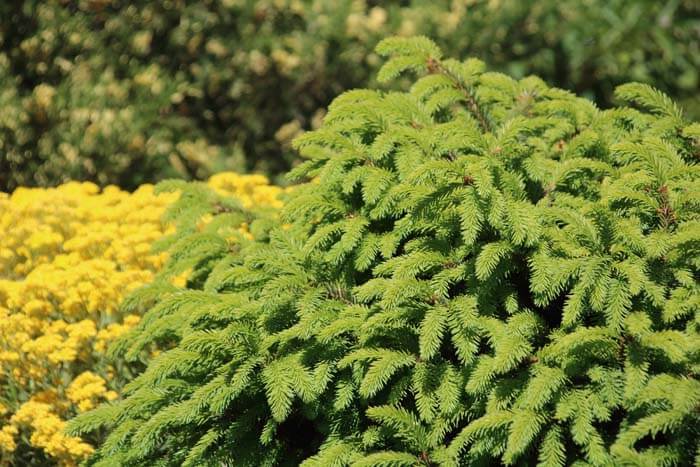
There are many compact spruces (Picea spp.) available that are perfect for containers and small spaces. The classic bird’s nest spruce (Picea abies ‘Nidiformis’) is a low grower that has a tidy nest-like habit. It grows very slowly, reaching 2-feet high and several feet wide in 10 years. The bushy dwarf Norway spruce (Picea abies ‘Pumila’) is comparable but is rounded and does not spread. Another to try is the conical Daisy’s White spruce (Picea glauca ‘Daisy’s White’), a gem with creamy white new growth that darkens to blue-green by summer. It is very slow growing and gets to just 3 feet after 10 years.
Due to smaller lot sizes and with more people living in apartments and condominiums, many garden centers have increased their selection of dwarf conifers. Check with your local garden center and you may be very surprised at the choices available.
